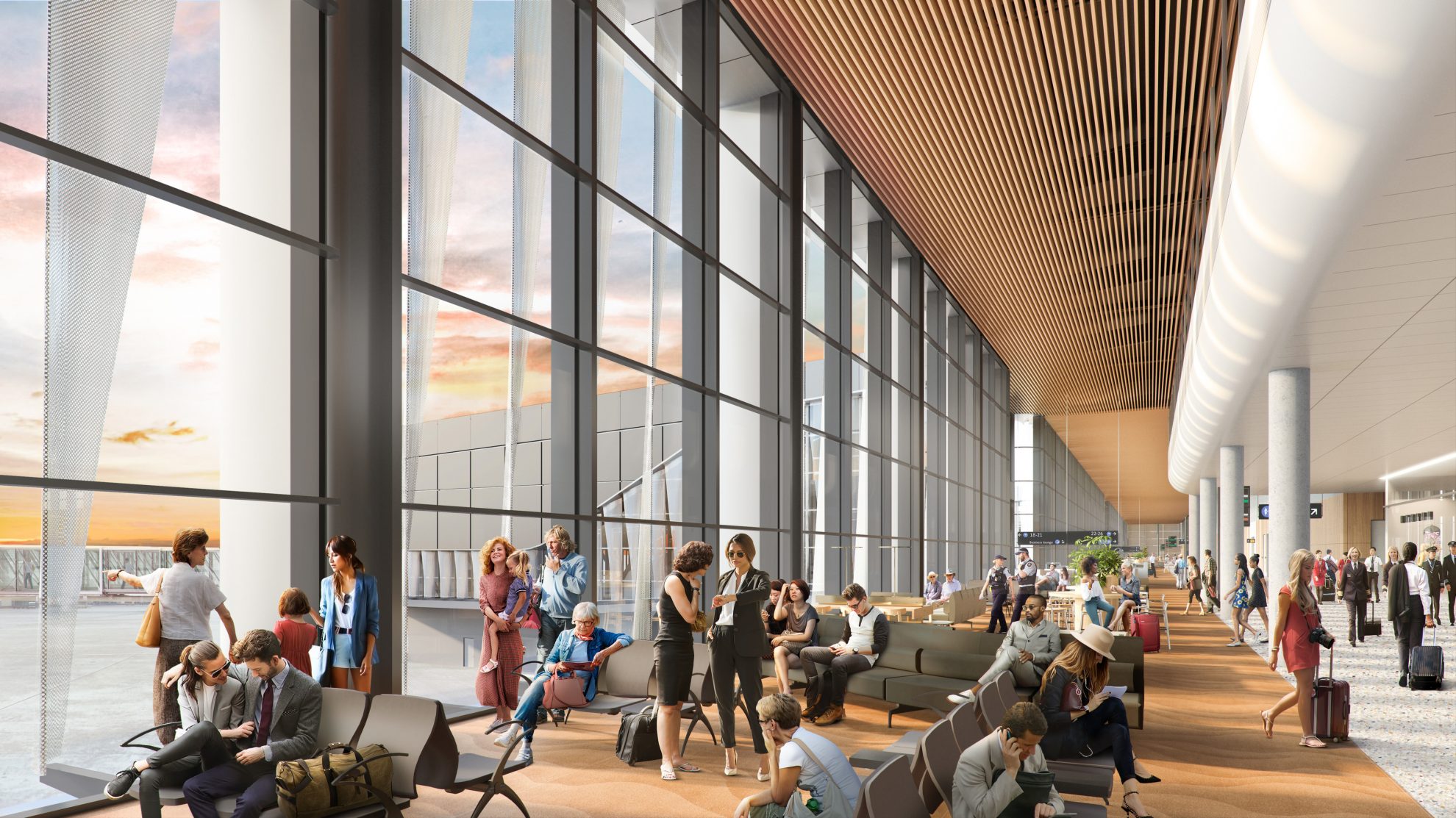Understanding Design’s True Value: New Research Links Airport Design Quality to ROI

[above]: Hobart International Airport Expansion
New research by COX and The Mercurius Group has proved the connection between airport design quality and return on investment.
The study titled ’Increasing Airport Revenue through CX + Design’ was launched on 23 July at the Australian Airports Association (AAA) Retail & Commercial Forum in Melbourne. Presenting the findings, Matt Findlay, COX Aviation Design Lead, then joined a panel discussion alongside industry leaders from Perth Airport, Urbis and QIC Eastland on ’Finding the Missing Link – Proving that Investment in CX/Design Impacts Commercial Outcomes’.
The new research captures consumer-led insights into how design influences travellers’ propensity to dwell and spend money in airport retail settings. It also explores whether good design can entice travellers to increase time spent at the airport by bringing their arrival time forward.
[below]: Sydney Airport Marketplace


“After years of being asked if there will be a return on investment if clients go with higher quality design, now we can answer that question with conviction,” says Matt.
“We set out to validate the true value of design quality and define its role in the creation of self-supporting human environments. What we’ve identified is unprecedented in aviation retail. Our research proves that passengers react positively to quality spaces, leading to a higher propensity to spend,” he explains.
Travellers arrive at airport terminals with limited time between passenger screening and boarding. We wanted to understand the links between designing airport retail spaces that stressed, bored and tired travellers want to spend time in, and how to increase this limited time to capitalise on associated spending.

Design has the potential to influence how travellers think, feel and behave including how they spend their time and money in airport retail. We know from airport passenger data that dwell time is a predictor of retail spending at airports, however what we don’t know is how good design links to retail KPI’s in airport settings.
“Over time, the role of retail and commercial facilities has become increasingly important to terminal design,” says Ivo Favotto, Managing Director at The Mercurius Group.
“For many airports, these activities account for a significant proportion of overall revenue, so their growth plays an increasingly important role in funding terminal expansions. It is exciting to see this new data that will satisfy CFOs and convince CEOs in the power of customer experience and design quality,” Ivo continues.
[below]: Hobart International Airport

Architects and designers are often challenged to validate why elements are required and what value they serve. Daylight and views, tactile finishes and spacious areas providing passenger comfort and entertainment are seen to inflate the budget unnecessarily.
“Our aim was to understand the relationship between customer-led design and commercial outcomes,” explains Dr Jacqueline Baker, COX Head of Research & Development.
“With the support of THINK Global Research, our methodology invited 250 Australian travellers to participate in a choice modelling study. Beyond the evidence showing a clear connection between quality design and higher revenue, our research includes key insights for C-suite leaders to position airports for commercial outcomes that could amount to millions of dollars annually,” says Jacqueline.


[above] Western Sydney Airport
COX and The Mercurius Group have collaborated on multiple airport terminal developments over the years including Western Sydney International, Cairns, Sydney, Singapore, Hong Kong and Beijing. Most recently, we worked together on the design of the AU$200 million expansion of Hobart Airport’s passenger terminal, a major redevelopment which is due for completion by 2027.
Read the snapshot report below.